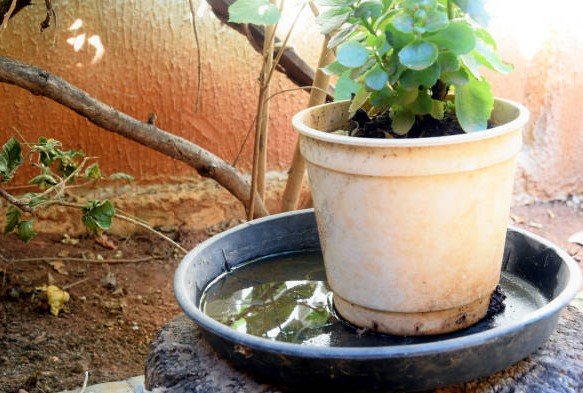As heavy monsoon showers drench Dakshina Kannada, health officials in Karnataka are sounding the alarm over a quiet but dangerous surge—dengue. The numbers aren’t skyrocketing yet, but the patterns have them worried. With stagnant water forming in every corner, from urban gutters to plantation ditches, the stage is set for a spike in mosquito-borne illnesses.
Dr. H.R. Thimmayya, the District Health Officer, confirmed ten fresh dengue cases in May alone. That’s on top of 33 cases logged between January and April. While the year-to-date figure—43—may seem low compared to the 534 cases reported in the same period last year, officials warn that things can change quickly. Especially when the monsoon is just getting started.
Rain Brings Relief, But Also Mosquitoes
It’s a classic paradox. Rains cool the air and replenish reservoirs. But they also leave behind puddles, open containers, and hidden pockets of stagnant water—perfect breeding grounds for Aedes mosquitoes, the primary transmitters of the dengue virus.
Dr. Thimmayya says it’s this very shift in climate that makes dengue such a lurking threat now. “Every spell of continuous rain creates new habitats for mosquito breeding,” he explained, noting a sharp uptick in suspected cases across the taluks of Beltangady, Sullia, and Bantwal.
The health department isn’t wasting time. With dengue capable of turning deadly, early prevention is the priority.
District Declares Weekly Dry Day, Calls for Action
To clamp down on mosquito habitats, officials have rolled out a weekly public health campaign. Every Friday is now ‘Dry Day’. It’s simple in principle: residents are asked to drain and clean every water container they own.
This includes water tanks, flower pots, cement drums, and barrels—basically, anything that can hold water for more than a day.
-
Residents are urged to tightly cover all containers
-
Water in coolers and planters should be replaced every 48 hours
-
Discard unused items like tires or bottles where water can collect
Local officials hope that if households take this seriously, they can break the mosquito lifecycle. “Dengue is preventable. But that means people must be proactive,” Thimmayya stressed.

Farms, Plantations Face Unique Dengue Risk
It’s not just homes. Agricultural spaces are posing a unique set of problems. Rubber and areca nut plantations—common across Dakshina Kannada—have become unexpected danger zones.
In rubber farms, mosquitoes breed in the latex collection cups left unattended. In areca nut estates, narrow irrigation trenches and water pools offer ample breeding territory.
Health officials have now issued tailored advisories for farmers.
-
Rubber growers must empty and scrub latex cups frequently.
-
Areca farmers should inspect ditches, pipes, and corners where water collects.
It’s a specific yet necessary move, especially considering how widely these crops are grown across the region.
On the Ground: Health Teams Knock Doors in Danger Zones
In neighborhoods marked as high-risk—those with recent confirmed cases—things are getting hands-on. Local health teams are conducting door-to-door visits.
Each team is responsible for inspecting at least 50 households around a dengue-positive address. Their mission?
-
Locate and destroy mosquito larvae sources
-
Educate residents on signs and symptoms
-
Encourage medical visits over self-medication
This isn’t the first time Dakshina Kannada has turned to community-level interventions. But the urgency this year feels sharper. The region can’t afford to get caught off-guard like it did in 2023.
Spot the Signs Early, Avoid the Pharmacy
One recurring issue during outbreaks is the rush for over-the-counter painkillers. That’s dangerous.
Dengue can lead to a steep drop in platelet counts. Taking NSAIDs like ibuprofen or aspirin can worsen the situation and, in some cases, lead to internal bleeding.
Dr. Thimmayya has issued a clear warning: “If you’ve got sudden high fever, pain behind the eyes, joint aches, or persistent vomiting—get to a hospital. Don’t treat it at home.”
It’s a point worth repeating. Early diagnosis and proper care are the best chance of a full recovery. Self-medicating, however tempting, can backfire.
A Look at This Year vs Last Year
While the situation is still under control, it helps to see how things compare numerically.
| Month | 2024 Dengue Cases | 2025 Dengue Cases |
|---|---|---|
| January | 102 | 5 |
| February | 115 | 7 |
| March | 119 | 10 |
| April | 110 | 11 |
| May | 88 | 10 |
| Total (Jan–May) | 534 | 43 |
The difference is stark, but officials say it’s no reason to relax. Monsoon has just begun, and so has the real challenge.
Looking Ahead: Community Involvement Will Make or Break the Fight
Ultimately, success depends not just on health workers or district notices—it’s about how seriously the public responds. Emptying a few flower pots may seem trivial. But when millions do it, the ripple effect is huge.
What the region is fighting isn’t just a virus—it’s complacency. And in a place where one infected mosquito can bite hundreds, every small action counts.
For now, Dakshina Kannada walks a tightrope. The rains will stay. Whether dengue does too, depends on what happens next.
